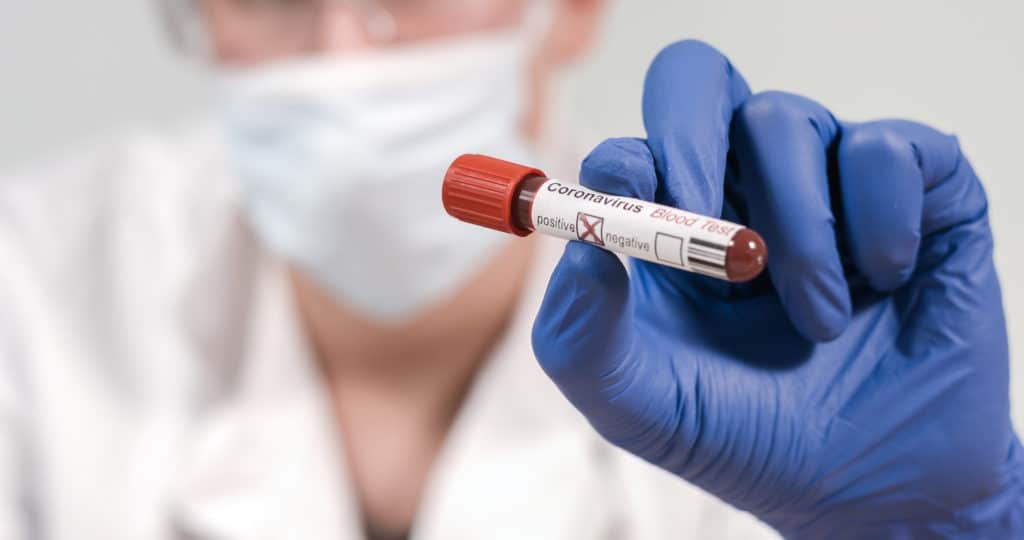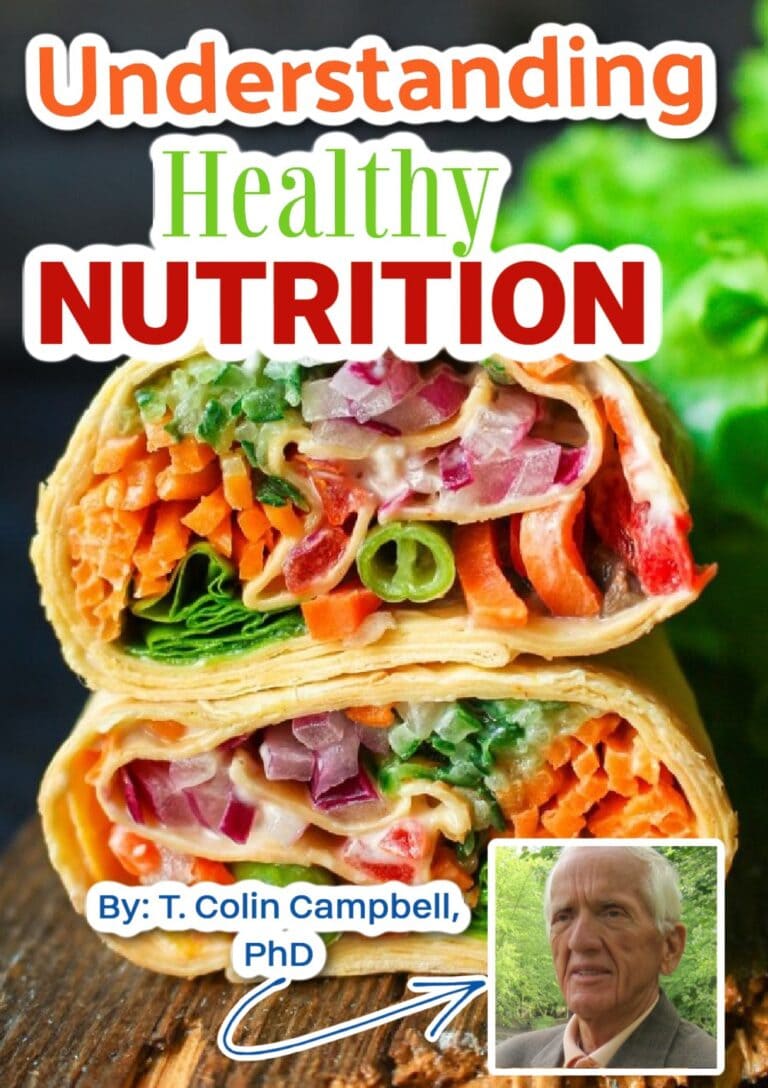A Physician’s Perspective on COVID-19, Inflammation, & Nutrition

Inflammation is an essential element of chronic disease
After discovering the profound impact that nutrition had on inflammation, I have spent the past decade reading the science and using food interventions to influence inflammation and chronic disease in my patients. Entering this world of nutrition and health has opened my eyes to the vast differences in opinions including the popularity of harmful food fads.
Most observers use weight as the primary endpoint in the evaluation of the intervention. I believe this is potentially misleading. Instead, I have always paid close attention to chronic disease burden as the primary endpoint.
This can be measured clinically by simple measures such as weight, blood pressure, blood sugar, abdominal circumference, pain severity, hsCRP, and medication burden. I have found that when my patients adjust their nutrition, this provides predictable health outcomes.
Nutritional research has been confounded by adopting traditional scientific methods. Food is complex and since it is still poorly understood, it does not lend itself to a reductionist scientific approach. This is because there are too many variables to account for, which may affect outcomes.
Understanding communicable infection
2020 has brought a frightening novel infection to communities throughout the world. COVID-19 is highly communicable with an R-0 of 3. The R-0 describes how many people on average each infected person passes the infection to.
Any number of 1 or above means that the infection will continue to spread deeper into our communities. R-0 can decrease with social distancing. When this number drops below 1, new infections will decrease and then stop.
We expect this to occur when enough people in each community have been infected. This will provide a herd immunity, thereby providing less susceptible persons for viral transmission.
Silent spreaders
The rapid spread through communities is also enhanced by the fact that COVID-19 virus can be shed by asymptomatic people, described as silent spreaders.
During this pandemic we have been limited by our testing capabilities, reducing our ability to identify and isolate cases, and track all contacts.
The infection load has increased to such levels that this approach is no longer effective. Many infected patients have no knowledge of sick contacts. The high level of contagion is also due to the high levels of viral shedding which has been estimated to be about 1,000-fold higher than SARS.
Flattening the curve
Social distancing is now our new norm and is effective in slowing the spread of the virus which is critical in “flattening the curve” to decrease the burden of having too many seriously ill patients at once.
We recommend that our patients strictly follow current CDC guidelines which promote responsible behavioral changes such as social isolation, frequent hand washing, avoiding touching one’s face, wearing masks in public, and self-isolation if sick. Following these behaviors will reduce the number of patients requiring critical care in our hospitals.
Impact of health promoting behaviors
What about the behaviors that are effective in health promotion? Could they be effective in reducing the severity of infections? This is an important subject that is, unfortunately, in my opinion, infrequently discussed. This is significant because chronic diseases are a major risk factor for severe illness and death due to COVID-19 infection.
COVID-19 and diabetes
In March 2020, Stephen Smith, MD, founder of The Smith Center for Infectious Diseases in New Jersey, reported on 72 patients with severe COVID-19 disease: 29.2% of these were prediabetic while 47.2% were diabetic. Twenty of these patients required intubation. Eighteen of the intubated patients were diabetic and the remaining two were prediabetic.
As one can see, all the patients in this report who became severely ill (requiring intubation) were either prediabetic or diabetic.
Whole food plant-based diet and type 2 diabetes
Type 2 diabetic patients who are on insulin, and start following a Whole Food Plant-Based No Oil nutrition (WFPBNO) treatment, are often able to discontinue insulin in as little as seven days. This is most likely due to a rapid reversal of insulin resistance.
Painful diabetic peripheral neuropathy symptoms start improving within seven days, which most likely is due to improved microcirculation in peripheral nerve tissue. The impact of this intervention on insulin resistance is quick and can profoundly reduce the known risk factors for severe COVID-19 infection.
Medical training and nutrition
As I reflect on my own introduction to studying nutrition, it did not begin in medical school or residency where one might think. There I received the traditional training, which was very little, indeed.
It all began with a patient who ended up teaching me.
My introduction to WFPB nutrition
Up until about 10 years ago, I believed that a healthy diet consisted of limiting sugar, processed foods, and fast foods.
I grew up in South Africa, where meat cookouts, known as braaivleis, were very much part of my culture.
While in Kentucky, I lived on a farm and raised cattle that were grass-fed and had no contact with chemicals or hormones, because I believed in the nutritional importance of high-quality meat.
At that time, I was leading an interventional trial on a small group of patients that had chronic fatigue and fibromyalgia. They were monitored clinically, while laboratory testing and CIMT (Carotid Artery Intimal Thickness) scores were also followed.
I also began monitoring my own CIMT scores, knowing that my excellent personal lifestyle choices would protect me. But to my shock, not only did I have soft plaque affecting my internal carotid arteries, but overtime, plaque burden was increasing and my CIMT scores advanced. The group of patients was also showing a negative impact to the study intervention.
As we were entering the third year of the study, their CIMT scores accelerated. I decided to end the study and was looking for an intervention that would reduce their inflammation scores.
Patient success educates me
Right around this time, a patient who had been following with me for several years came to see me. She greeted me with a broad smile on her face and a gift for me in her hand.
The gift was a book by Caldwell B. Esselstyn, Jr., MD called, Prevent and Reverse Heart Disease. She told me that she was following this new diet program and would like for me to check her hsCRP (an inflammation marker for coronary artery disease risk).
She had a strong family history of coronary artery disease and her hsCRP remained elevated for several years, despite interventions including statin therapy and exercise.
When I received her results, I was surprised to discover that her level had dropped to ¼ of her baseline. I had never seen such a dramatic drop in a hsCRP level, and I have never seen it since following any other intervention than WFPBNO nutrition.
After reviewing her labs, I decided to read the book that she had given me and then provided this treatment as a new option for the study patients as I ended the study intervention.
Using the Esselstyn Program for my interventional trial patients
As it turned out, only half of these patients adopted this lifestyle. But, of the ones that did make these behavioral changes, they all also showed a reduction of their hsCRP levels to approximately ¼ baseline. In addition, they all had decreases in abdominal circumference, blood pressure, insulin resistance, blood sugar, cholesterol and triglycerides, pain scores and fatigue scores.
In fact, most of these patients who had been sick for 10 years or more returned to their normal, pre-morbid, day-to-day function. I soon realized that seemingly unrelated chronic diseases were in fact related. The common thread was inflammation reduction.
WFPBNO nutrition provides an opportunity for healing. So how does this discussion relate to COVID-19?
Inflammation and COVID-19 recovery
Since the COVID-19 outbreak, there is renewed interest in the benefits of WFPBNO nutrition in providing an improved immune response.
Over the past decade, I have seen a noticeable decline in the frequency of sick visits amongst my patients who eat this way as compared to those eating other diets. Also, chronic recurrent infections such as herpes become less frequent requiring less need for treatment.
Clearly an efficient immune response is very important in healing from COVID-19 infection. An abnormal host inflammatory response, however, has been recognized in the subset of patients who become severely ill.
What research is showing
A subgroup of severely ill patients with COVID-19 with multiorgan failure and a hyperinflammation state appears to have a cytokine storm. The cytokine profile in COVID-19 resembles Hemophagocytic Lymphohistiocytosis where there is raised interleukin (IL)-2, IL-7, granulocyte colony stimulating factor, interferon inducible protein-10, monocyte chemoattractant protein1, macrophage inflammatory protein 1-alpha, and tumor necrosis factor-alpha.
In these patients, immunosuppressive treatments may be helpful. The following interventions have been suggested: steroids, intravenous immunoglobulin, Anakinra (IL-1 Blockade, Tociluzumab (IL-6 receptor blockade), and Janus kinase (JAK) inhibition. [1]
Acute coronary syndrome (ACS) is precipitated by cytokines (monocyte chemoattractant protein 1, tumor necrosis factor α, and interleukins) release by foam cells. Foam cells develop after macrophages ingest oxidized LDL particles in the subendothelial space (below the lining of the arteries) over plaques in the coronary arteries. This renders the overlying endothelium floating and prone to rupture [2].
Nutritional treatment for reducing inflammation
This nutritional treatment has been shown to reduce acute coronary syndrome by providing a profound inflammation-reducing effect on the subendothelial space. Enhanced nitric oxide (a powerful innate antioxidant) appears to be a major player in reducing inflammation and cytokine release preventing acute coronary syndrome [3],[4].
WFPBNO nutrition provides systemic anti-inflammation affecting not only the coronary arteries but also all organs including lung tissue. Patho-immunological responses share common origins and are triggered by inflammation. These responses are not organ-specific.
My medical perspective
I postulate that WFPBNO nutrition will reduce the abnormal hyperinflammation states seen in severe COVID-19 infections thereby reducing morbidity and mortality.
This dietary approach has proven to be a very powerful tool in my practice for patients with chronic disease. I am excited to report that over the past decade, none of my patients with coronary artery disease, who have followed this program compliantly, have had another event.
I strongly recommend this nutritional approach to my patients as they prepare for the possibility of being infected with COVID-19. It is a simple, yet profound, intervention that is very easy to follow.
After adopting this lifestyle, the clinical response is rapid. Even for critics of nutritional interventions, what would be the downside? Apparently, none. The simple and logical interventions in life are often the most effective.
We should consider that nutrition may be a significant trigger that may cause severe disease in COVID-19 patients. I encourage my healthcare colleagues, as I do my family, friends, and patients, to adopt these healthy behaviors as we all face potential infection by COVID-19.
About the author

Contributing guest author, Dr. Sven T Jonsson, uses plant-based nutrition in treating, reversing and also preventing chronic disease. He has a patient-based approach toward nutrition teaching and support.
Dr. Jonsson is a Family Medicine Specialist in Brevard, North Carolina. He graduated from the University of Cape Town in 1985. He completed a residency at Marshall University School of Medicine and has been practicing medicine for over three decades.
Dr. Sven T Jonsson is affiliated with Park Ridge Health and cooperates with many other doctors and specialists in the medical group Fletcher Hospital Incorporated.
More Scientific Articles on Plant-Based Nutrition
Cited research:
- Puja Mehta, Daniel F McAuley, Michael Brown, Emilie Sanchez, Rachel S Tattersall, Jessica J Manson et al. (2020). COVID-19: Consider Cytokine Storm Syndromes and Immunosuppression. Lancet, 395(10229), p1033-1034.
- Amit Kumar, MD and Christopher P. Cannon, MD. (2009). Acute Coronary Syndromes: Diagnosis and Management, Part I. Mayo Clin Proc. 84(10)p917-938.
- Caldwell B. Esselstyn, Jr., MD. (2019). Is Oil Healthy? International Journal of Disease Reversal and Prevention (IJDRP). 1(1), p34-36.
- Caldwell B. Esselstyn, Jr., MD; Gina Gendy, MD; Jonathan Doyle, MCS; Mladen Golubic, MD, PhD; Michael F. Roizen, MD. (2014). A Way to Prevent CAD? The Journal of Family Practice. 63(7), p356-364.





Dr. Jonsson,
Thank you for spreading the word and the powerful effects of Dr. Esselstyn’s wfpbno
Way Of Eating!
You are saving and improving the health of hundreds of you patients by empowering them with this information.
Miss you Doc,
Bob Coffey
Cell 502-817-1355